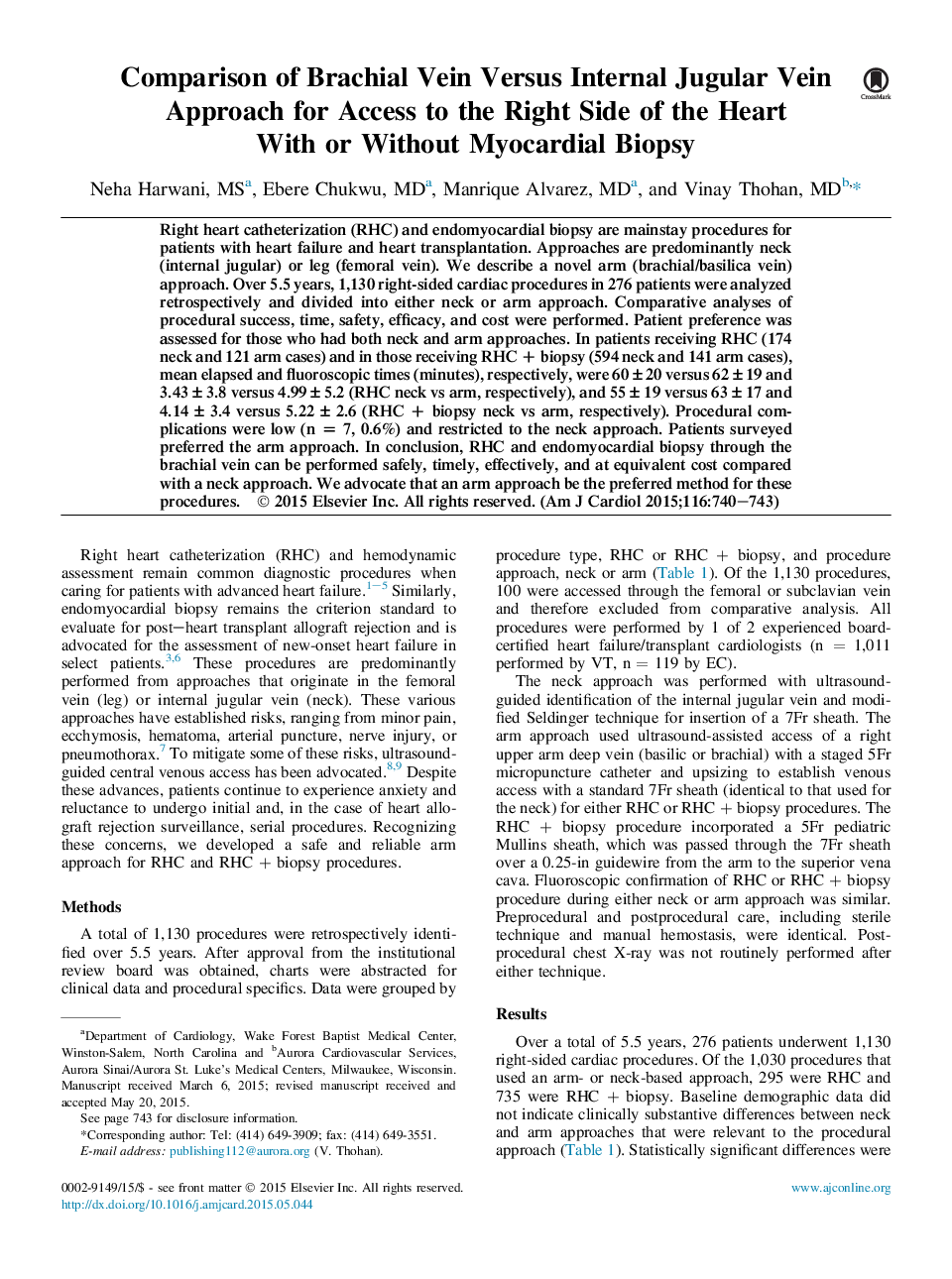| Article ID | Journal | Published Year | Pages | File Type |
|---|---|---|---|---|
| 2853390 | The American Journal of Cardiology | 2015 | 4 Pages |
Right heart catheterization (RHC) and endomyocardial biopsy are mainstay procedures for patients with heart failure and heart transplantation. Approaches are predominantly neck (internal jugular) or leg (femoral vein). We describe a novel arm (brachial/basilica vein) approach. Over 5.5 years, 1,130 right-sided cardiac procedures in 276 patients were analyzed retrospectively and divided into either neck or arm approach. Comparative analyses of procedural success, time, safety, efficacy, and cost were performed. Patient preference was assessed for those who had both neck and arm approaches. In patients receiving RHC (174 neck and 121 arm cases) and in those receiving RHC + biopsy (594 neck and 141 arm cases), mean elapsed and fluoroscopic times (minutes), respectively, were 60 ± 20 versus 62 ± 19 and 3.43 ± 3.8 versus 4.99 ± 5.2 (RHC neck vs arm, respectively), and 55 ± 19 versus 63 ± 17 and 4.14 ± 3.4 versus 5.22 ± 2.6 (RHC + biopsy neck vs arm, respectively). Procedural complications were low (n = 7, 0.6%) and restricted to the neck approach. Patients surveyed preferred the arm approach. In conclusion, RHC and endomyocardial biopsy through the brachial vein can be performed safely, timely, effectively, and at equivalent cost compared with a neck approach. We advocate that an arm approach be the preferred method for these procedures.
